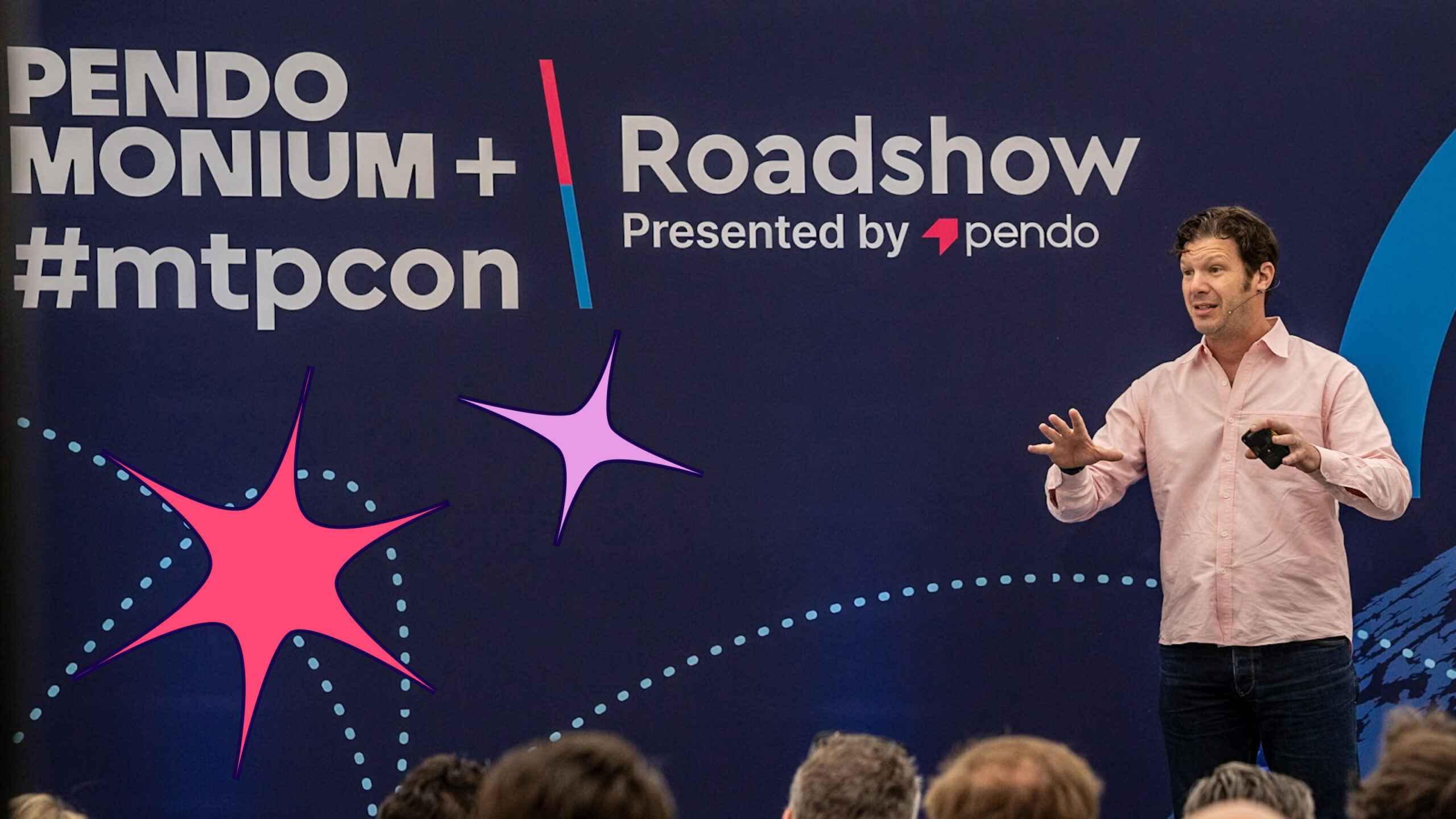Think about the last time you interacted with your bank. Or your insurance company. Or your coworkers. You likely pulled out your phone or laptop, opened a mobile or web app, and got to work. But what happened after you logged in? Did you get stuck? Was the user interface (UI) confusing? Did you decide to give up entirely?
Whether the primary users are external customers or internal employees (or both), every company relies on software to drive its business forward. And when that software works, it really works. When it doesn’t, well, that’s a different story.
As software replaces more in-person activities and enhances more workflows, oftentimes a disconnect in that experience arises. At Pendo, we call it the software experience gap.
What is the software experience gap?
At its core, the software experience gap is the difference between what users expect from a product and what they actually experience. Especially as social media and other consumer-facing platforms have evolved to offer sleek and intuitive interfaces, users have come to expect the software they use for work to be just as easy to navigate. Can you blame them?
The software experience gap comes into play when the simple, efficient products of users’ dreams turn out to be clunky, confusing, and frustrating. And when you consider that the average enterprise maintains 288 SaaS applications, the scale of the problem becomes alarmingly clear. Because software is integral to the customer (and employee) experience, it has a direct impact on business outcomes like retention, product adoption, productivity, and customer loyalty.
Here’s the good news: There’s a way to close your software experience gap. And when you do, your customers get more value, your employees adopt and use software more effectively, and you’re able to drive down onboarding, training, support, and software costs.
How to close your software experience gap
The first step to closing the software experience gap is to recognize that your software experience is something you can control—you just need the right methods for doing so. We’ve split the process for closing the gap into two parts.
Part 1: Understand how people use your software
You can’t improve users’ experience with your software if you don’t know how they’re using it. Product analytics can help shed light on where users are getting stuck or dropping off, which features they use the most (and the least), and which behaviors correlate with positive outcomes like retention and customer satisfaction (e.g. NPS Promoters). This means you’re able to take the guesswork out of improving the user experience and base iteration on immediate, data-informed insights.
Complementary to this quantitative data is qualitative data, which you should collect in the form of customer feedback. Use in-app guides to solicit feedback while users are in the product, when their experience and opinions will be top of mind. It’s also useful to create an always-on place in your app for users to submit feedback whenever they have it.
Part 2: Guide users to success
All of the product usage and feedback data you collected means nothing if you don’t act on it. Rather than blasting customers (or employees) with emails that will likely go unread or relying on standing meetings or training sessions, closing the software experience gap requires a more strategic approach.
The best way to reach users effectively is to provide resources and guidance within the application itself, using the product as your communication channel.
Create in-app guides that walk users through key workflows (e.g. those you identified as correlating with higher retention) and direct users to features you know they will find value in. You can also bring your entire onboarding experience in-app, leveraging guides to welcome new users, familiarize them with the UI, and point them in the right direction as they get started. For a less intrusive form of in-app support, utilize tooltips to preemptively mitigate confusion or answer common questions—for example, if certain product areas or features keep coming up on support calls.
Bonus: Measure, iterate, and repeat
Once you’ve built in-app guides, your attention should once again turn to the data. Track the performance of your guides to understand how (or if) they’re affecting user behaviors. Are users getting to the end of your walkthrough? Are they interacting with the tooltips you created? Are they adopting your high-value features? This way, you can adjust your in-app guides as needed to ensure they’re adding to—not detracting from—the product experience.
Although closing your software experience gap doesn’t happen overnight, small changes can make a big difference. Look to your product data for tweaks you can make immediately, iterations you can plan for future release cycles, and even long-term shifts to your product strategy. You’d be surprised by how much you can learn from what users are already telling you, just in how they utilize your software today.


